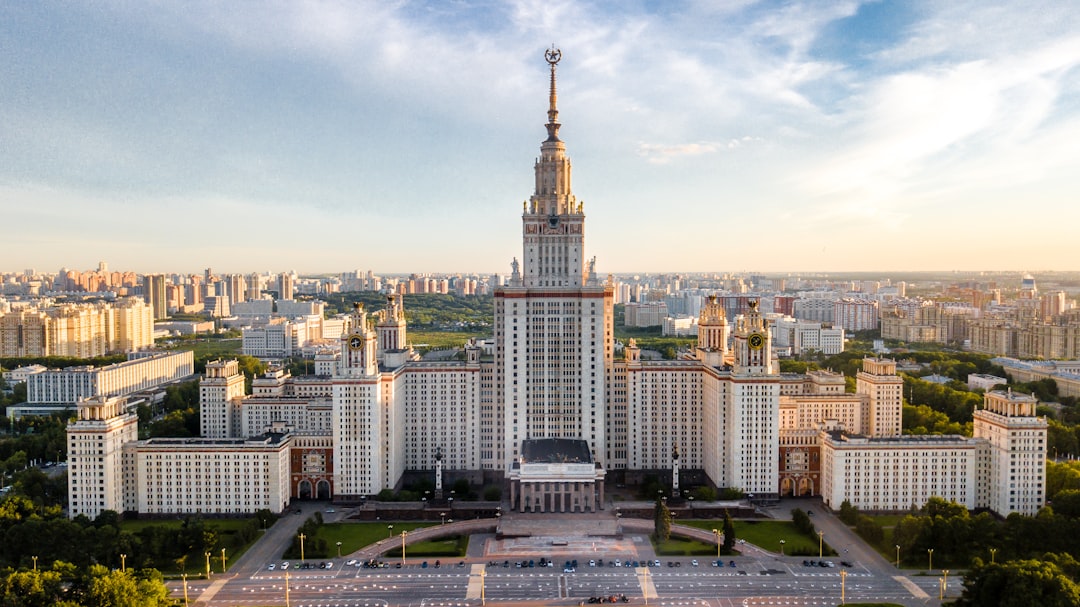The Tunguska Event, also known as the Tunguska explosion, was a mysterious and powerful blast that occurred on June 30, 1908, in a remote region of Siberia, Russia. The explosion is believed to be the largest impact event in recorded history and had a magnitude estimated to be between 10 and 15 megatons of TNT. The blast flattened an estimated 80 million trees over an area of 2,000 square kilometers (770 square miles) and caused seismic waves that were detected as far away as the United Kingdom.
The Tunguska explosion took place near the Stony Tunguska River in what is now Krasnoyarsk Krai, Russia. The exact location of the blast was in a sparsely populated area, which is why there were no reported human casualties. However, the explosion was so powerful that it could be heard and felt over a thousand kilometers away. Eyewitnesses reported seeing a bright light in the sky followed by a loud explosion, which was followed by a shockwave that knocked people off their feet and shattered windows.
Key Takeaways
- The Tunguska Event was a massive explosion that occurred in Siberia in 1908, flattening trees and causing seismic waves.
- Theories about the cause of the explosion range from a comet or asteroid impact to a nuclear explosion or a natural gas explosion.
- Eyewitnesses reported seeing a bright light and feeling intense heat, followed by a shockwave that knocked them off their feet.
- The Tunguska Event had a significant impact on the environment, destroying millions of trees and leaving a large area of scorched earth.
- Scientists have studied the Tunguska phenomenon through various methods, including analyzing tree rings and conducting ground surveys.
Theories and Speculations: What Caused the Tunguska Explosion?
The cause of the Tunguska explosion has been the subject of much speculation and debate among scientists and researchers. There are several theories that have been proposed to explain the event, but none have been proven conclusively.
One theory suggests that the explosion was caused by the impact of a comet or asteroid. This theory is supported by the fact that no impact crater has been found at the site, which suggests that whatever caused the explosion likely disintegrated or exploded before reaching the ground. Additionally, analysis of tree rings in the area has shown evidence of increased growth rates in the years following the event, which is consistent with the release of large amounts of energy.
Another theory proposes that the explosion was caused by a natural phenomenon, such as a methane gas explosion or a volcanic eruption. However, there is little evidence to support these theories, and they are generally considered less likely than the comet or asteroid impact theory.
There are also some who believe that the Tunguska explosion was caused by a man-made event, such as a secret military experiment or the crash of an extraterrestrial spacecraft. However, there is no concrete evidence to support these claims, and they are generally dismissed by the scientific community.
Eyewitness Accounts: What Did the Locals See and Hear?
Eyewitness accounts from the Tunguska region provide valuable insights into the nature of the explosion and its effects on the environment. Many of these accounts were collected by Russian scientist Leonid Kulik, who led several expeditions to the area in the 1920s and 1930s.
According to eyewitnesses, the explosion was preceded by a bright light in the sky, which was described as being brighter than the sun. This light was followed by a loud explosion that could be heard over a thousand kilometers away. Some witnesses reported seeing a column of fire rising into the sky, while others described a mushroom-shaped cloud.
The shockwave from the explosion was so powerful that it knocked people off their feet and shattered windows in nearby towns. Some witnesses reported feeling intense heat, while others described a strong wind that blew trees over and flattened buildings. The shockwave also caused seismic waves that were detected as far away as Europe and Asia.
The Aftermath: How Did the Tunguska Event Affect the Environment?
| Metrics | Impact |
|---|---|
| Area Affected | 2,150 square kilometers |
| Forest Damage | 80 million trees destroyed |
| Shockwave | Equivalent to a 5.0 magnitude earthquake |
| Atmospheric Effects | Increased atmospheric pressure and temperature |
| Wildlife Impact | Animals killed or displaced |
| Human Impact | No human casualties reported |
The Tunguska explosion had a devastating impact on the environment in the immediate vicinity of the blast. An estimated 80 million trees were flattened over an area of 2,000 square kilometers (770 square miles), creating a vast wasteland of charred and uprooted trees. The force of the explosion also caused a shockwave that flattened buildings and killed wildlife in the area.
The destruction of trees and wildlife had a significant impact on the local ecosystem. The loss of vegetation disrupted the food chain and led to a decline in the population of animals that relied on the forest for food and shelter. The charred remains of the trees also released large amounts of carbon dioxide into the atmosphere, contributing to global warming.
In the long term, the Tunguska explosion had a lasting impact on the environment. The area affected by the blast has been slow to recover, and even today, over a century later, there are still areas where the ground is covered in dead trees and debris. The event also served as a reminder of the destructive power of natural disasters and the need to protect our planet’s fragile ecosystems.
Scientific Investigations: How Have Experts Studied the Tunguska Phenomenon?
Since the Tunguska explosion, scientists from around the world have been studying the event in an effort to understand its cause and learn more about the nature of impact events. Over the years, numerous scientific expeditions have been conducted to the Tunguska region, and modern technology has been used to study the blast in greater detail.
One of the challenges of studying the Tunguska phenomenon is that it occurred in a remote and inaccessible location. The area is covered in dense forests and swamps, making it difficult for researchers to reach the site. However, advances in technology have made it possible to conduct remote sensing studies using satellite imagery and aerial surveys.
In recent years, scientists have used ground-penetrating radar and other geophysical techniques to search for evidence of an impact crater at the Tunguska site. While no crater has been found, these studies have provided valuable insights into the nature of the explosion and its effects on the environment.
The Search for the Impact Site: Where Did the Tunguska Object Land?

Despite decades of scientific investigation, the exact location of the impact site has remained elusive. The lack of a visible impact crater has led to speculation that whatever caused the explosion disintegrated or exploded before reaching the ground.
One theory suggests that the object responsible for the Tunguska explosion was a comet rather than an asteroid. Comets are made up of ice and other volatile materials, which would have vaporized upon entering Earth’s atmosphere, leaving little or no trace of an impact crater. This theory is supported by the fact that comets are known to have a higher velocity than asteroids, which would explain the lack of a visible crater.
Another theory proposes that the object exploded in mid-air, creating a shockwave that flattened trees and caused widespread destruction. This theory is supported by eyewitness accounts, which describe a bright light in the sky followed by a loud explosion.
In recent years, there have been several expeditions to the Tunguska region in search of evidence of the impact site. In 2007, a team of scientists from Italy and Russia discovered microscopic mineral fragments in peat samples taken from the area. These fragments are believed to be remnants of the object that caused the explosion and provide valuable clues about its composition.
The Role of Comets and Asteroids: Could the Tunguska Event Happen Again?
The Tunguska event serves as a reminder of the potential dangers posed by comets and asteroids. While impacts of this magnitude are rare, they do occur from time to time and can have devastating consequences for life on Earth.
The likelihood of a similar event occurring in the future is difficult to determine. However, scientists estimate that an event on the scale of the Tunguska explosion happens once every few centuries. The impact of such an event would depend on the size and composition of the object, as well as its trajectory and location of impact.
To mitigate the risk of future impact events, scientists and researchers are actively studying comets and asteroids and developing strategies to detect and deflect potentially hazardous objects. This includes the use of ground-based telescopes, space-based observatories, and missions to study near-Earth objects up close.
The Cultural Significance of Tunguska: How Has the Event Influenced Art and Literature?
The Tunguska event has had a significant impact on art and literature, inspiring numerous works that explore the mysteries of the universe and the destructive power of natural disasters. The event has captured the imagination of artists and writers, who have used it as a metaphor for the fragility of human existence and the unpredictability of nature.
One example is the Russian science fiction novel “Roadside Picnic” by Arkady and Boris Strugatsky, which was published in 1972. The novel tells the story of an alien visitation in a remote area called the Zone, which is heavily influenced by the Tunguska event. The Zone is depicted as a dangerous and mysterious place where strange phenomena occur, much like the area affected by the Tunguska explosion.
The Tunguska event has also been depicted in visual art, including paintings, sculptures, and installations. Artists have sought to capture the awe-inspiring power of the explosion and its impact on the environment. These works serve as a reminder of the destructive forces that shape our world and our place within it.
Tunguska in Popular Culture: How Has the Event Been Portrayed in Movies and TV Shows?
The Tunguska event has been featured in several movies and TV shows, often as a plot device or backdrop for a larger story. One example is the 2001 film “The Lost World: Jurassic Park,” in which the Tunguska event is depicted as the result of a meteor impact that wiped out the dinosaurs.
While these portrayals may take creative liberties with the actual events, they help to raise awareness of the Tunguska event and its significance in popular culture. They also serve as a reminder of the ongoing mysteries and unanswered questions surrounding the explosion.
What Have We Learned from the Tunguska Event and What Remains a Mystery?
The Tunguska event remains one of the most enigmatic and intriguing mysteries in scientific history. Despite decades of research and investigation, the exact cause of the explosion has yet to be determined conclusively. While there are several theories that have been proposed, none have been proven beyond a doubt.
However, the Tunguska event has taught us valuable lessons about the destructive power of natural disasters and the need to protect our planet’s fragile ecosystems. It has also served as a reminder of the potential dangers posed by comets and asteroids and the importance of continued research and monitoring.
As our understanding of the universe continues to evolve, it is likely that new discoveries will shed light on the nature of the Tunguska event and help to unravel its mysteries. Until then, the Tunguska explosion will remain a testament to the power and unpredictability of nature, inspiring awe and wonder in those who seek to understand it.
FAQs
What is the Tunguska Event?
The Tunguska Event was a massive explosion that occurred on June 30, 1908, in a remote region of Siberia, Russia. The explosion is believed to have been caused by a meteor or comet entering the Earth’s atmosphere and exploding in mid-air.
What was the impact of the Tunguska Event?
The Tunguska Event is considered to be the largest impact event in recorded history. The explosion flattened an estimated 80 million trees over an area of 2,150 square kilometers. The impact was so powerful that it was felt as far away as Europe and Asia.
What caused the Tunguska Event?
The exact cause of the Tunguska Event is still a matter of debate among scientists. However, it is widely believed that the explosion was caused by a meteor or comet entering the Earth’s atmosphere and exploding in mid-air. Some theories suggest that the object was made of ice, while others suggest that it was made of rock.
Was anyone killed in the Tunguska Event?
No one was killed in the Tunguska Event, as the region was sparsely populated at the time. However, several reindeer herders were reportedly knocked to the ground and injured by the shockwave.
What was the scientific significance of the Tunguska Event?
The Tunguska Event was significant because it provided scientists with a rare opportunity to study the effects of a large impact event. The explosion left behind a wealth of physical evidence, including the flattened trees and the impact crater. Scientists have used this evidence to study the dynamics of impact events and to develop strategies for mitigating the effects of potential future impacts.







